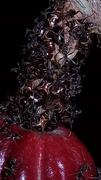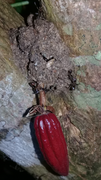1
Tropical Vegetables and Other Edibles - Buy, Sell, & Trade / Looking for help with Coconut Palm Sap collecting for sugar - Costa Rica
« on: January 17, 2022, 12:42:35 AM »
Hello everyone. Here in Costa Rica - I am getting ready to begin collecting coconut palm flower sap for making coco sugar and need to find a good source of natural anti-ferment herb alternative for the sap jars while they are on the trees. Typically either lime water, jackfruit wood shavings or mangosteen skins are put into the containers each time they are put on the tree to keep bugs away and prevent the sap from fermenting. I am short on all of these 3 things, so was wondering if anyone knows of any other herbs that can be used to accomplish the same thing. I was wondering if maybe Senna - Cassia alata leaves or wood could work since the juice it is a great anti-fungal, or maybe even Australian tea tree oil or leaves, or lemon eucalyptus leaves or bark (as I have all of these)
Thanks, Professor

Thanks, Professor








